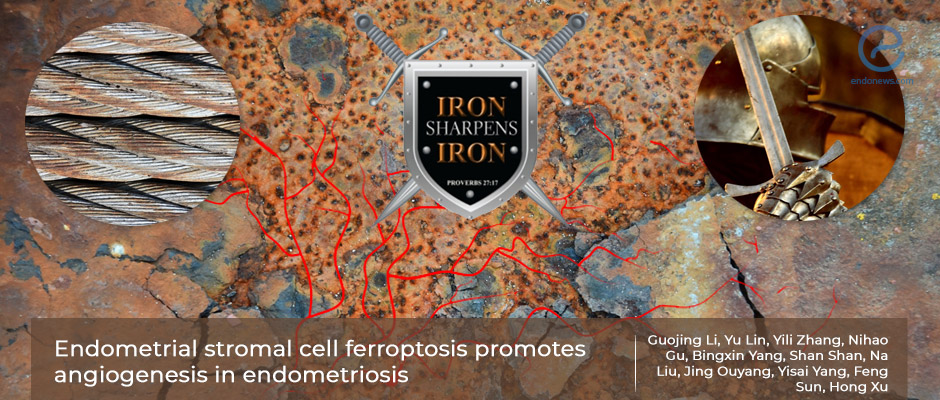Is it iron that calls vessels to form endometriosis
Feb 17, 2022
Ferroptosis triggers vascularization for endometriosis formation
Key Points
Highlights:
- The investigation of ferroptosis on endometriosis formation brought up a new theory for endometriosis formation that blood itself calls for more blood.
Importance:
- The results of the study revealed a new theory for endometriosis which might open a new perspective for therapeutic options like lowering the iron level of the affected lesion area.
What's done here:
- Eutopic and ectopic endometrial tissues of 24 women with endometrioma and endometrial tissues of 12 women with ovarian teratoma have been taken under investigation.
- Primary endometrial stromal cell cultures and immunohistochemistry analysis for cytokines (VEGF and IL8) from paraffin-embedded sections, and RNA analysis has been studied accordingly.
- In order to show iron accumulation and the effect of cyst fluid on endometrial stromal cell cultures, transmission electron microscopic images and reactive oxygen radical production analysis performed.
- In order to mimic ferroptosis, a molecule called erastin has been used on cell cultures; N-acetyl cysteine has been used to antagonize ROS production.
Key Results:
- The treatment of primary ESCs with cyst fluid led to an elevation in ROS production and remarkable change on mitochondrial membranes of cells indicating induction of ferroptosis.
- The erastin application caused elevated levels of VEGF and IL8 level on cell cultures meaning induction of angiogenesis.
- NAC application has been shown to be lowering ROS production and also reduced ferroptosis from cell cultures.
Limitations:
- The study revealed promising results for explaining the mechanism of ferroptosis on endometriosis formation but as ferroptosis might also affect a cell death pathway like apoptosis the limit of iron overload should have been underlined in the experiments to show which level of iron would lead to cell death and which level would inhibit cell death and promote endometriosis.
Lay Summary
The trigger mechanism of endometriosis formation is still under investigation. But it is clear that there is an iron overload on endometriotic lesions.
In the study conducted by Guojing Li et al, the mechanism of iron on endometriosis formation has been questioned. The researchers analyzed the effect of ferroptosis, a programmed cell death mechanism, on endometriosis formation and possible serving cytokines of this mechanism to promote endometriosis formation, and published their results in the journal Cell Death Discovery.
Eutopic and ectopic endometrial tissues of 24 women with endometrioma and endometrial tissues of 12 women with ovarian teratoma have been taken under investigation. Primary endometrial stromal cell cultures and immunohistochemistry analysis for cytokines (VEGF and IL8) from paraffin-embedded sections, and RNA analysis has been performed.
In order to show iron accumulation and the effect of cyst fluid on endometrial stromal cell cultures, transmission electron microscopic images and reactive oxygen radical production analysis have been applied. To mimic ferroptosis a molecule called "erastin" has been used on cell cultures, N-acetyl cysteine(NAC) has been used to antagonize ROS production.
The treatment of primary endometrial stromal cell cultures with cyst fluid led to an elevation in ROS production and remarkable change on mitochondrial membranes of cells indicating induction of ferroptosis. "Erastin" application caused elevated levels of VEGF and IL8 level on cell cultures meaning induction of angiogenesis. NAC application has been shown to be lowering ROS production and also reduced ferroptosis from cell cultures.
The results showed ferroptosis is real on endometriotic cells which were altered by iron overload, and also angiogenetic cytokines have been oversecreted because of these alterations.
While the study has some dark spots on explaining the mechanism, it is still promising to know the effect of iron overload on endometriosis formation to find a therapeutic option.
Research Source: https://pubmed.ncbi.nlm.nih.gov/35039492/
ferroptosis iron load endometriosis vascularizartion angiogenesis vessel formation cytokine erastin reactive oxygen species cell culture cytokine radical NAC

